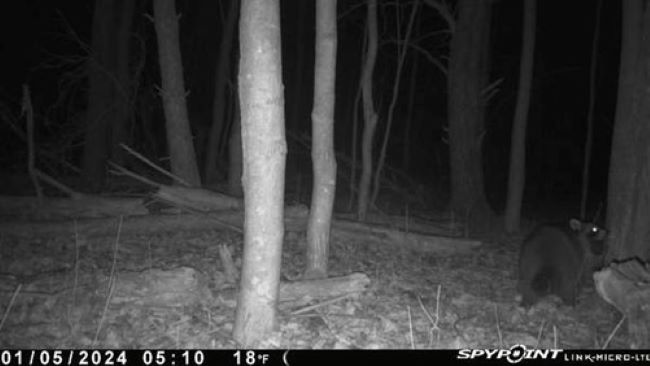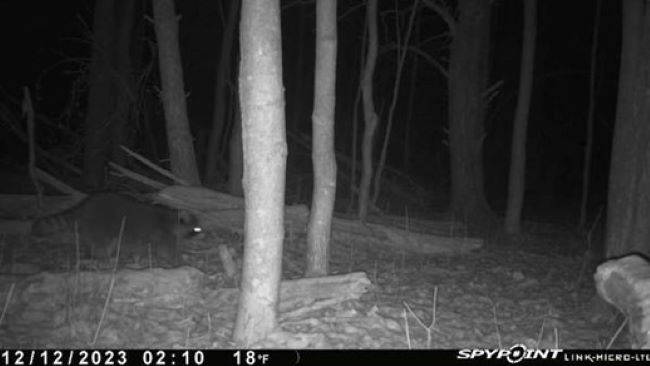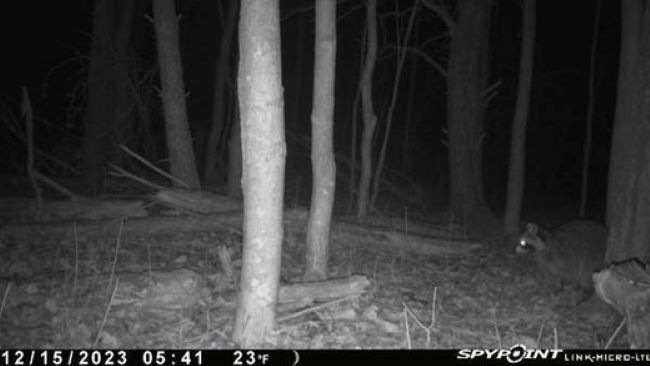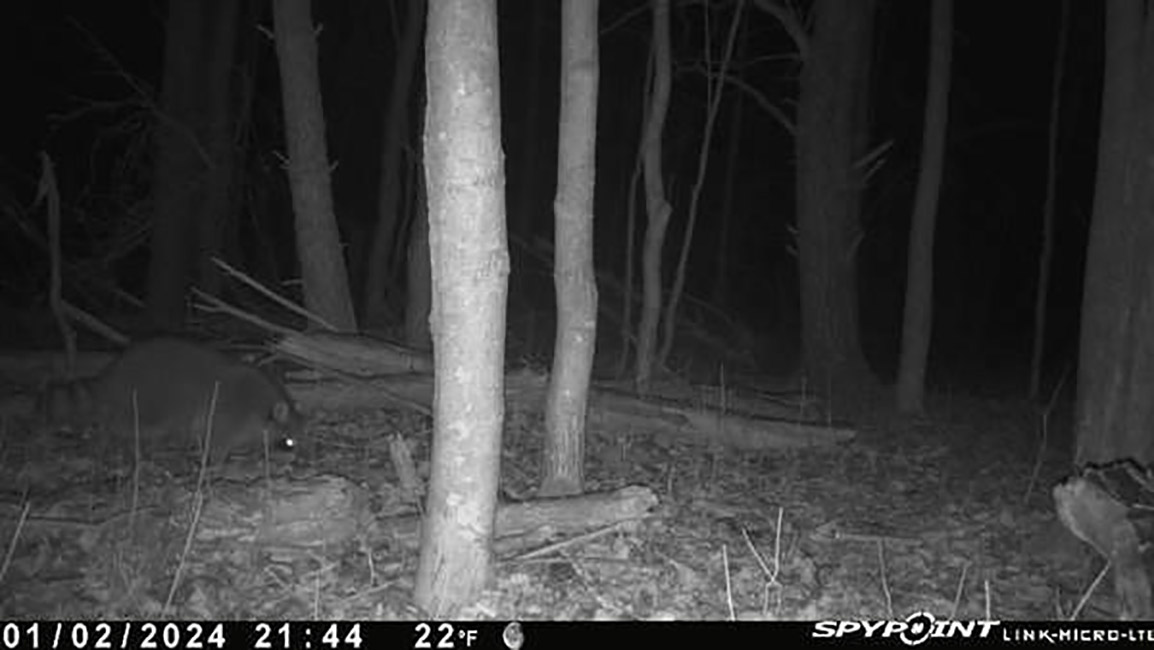by Chris Thompson
This fall, the Friends of Schmeeckle Reserve trail cameras were quite active, with many deer and coyote pictures daily. However, we were not getting a lot of other species, so in December one of the trail cameras was relocated to a site in an area of secluded forest, near a wetland within the Schmeeckle Reserve boundaries.
Turns out, this move yielded a number of pictures of a well-known, but little seen Schmeeckle resident—the common raccoon.

The raccoon is a medium-sized mammal (15-30 lb.) native to much of North America. It can be found in major urban centers, farms, woodlands, swamps, and just about anywhere there is water. The scientific name, Procyon lotor, means “washer” due to their habit of washing their food before consuming it with their very dexterous “hands.”
Raccoons are generalist omnivores that eat a wide variety of nuts, fruits, insects, carrion, and even human garbage. Due to their scavenging of human areas and their prominent eye mask, they get the inglorious titles of “trash pandas” or “masked bandits.” In reality, raccoons are a very adaptable and common mammal in our area.

Raccoons make their homes in hollow logs, burrows dug by other animals, and human structures. Raccoon densities tend to be highest nearest to water and/or human settlements – both of which Schmeeckle provides.
Though primarily nocturnal, raccoons can sometimes be seen in the dawn/dusk hours. So, if you are ever strolling through Schmeeckle and see a small, masked bandit in the forest, you may have just caught a glimpse of one the Reserve’s lesser seen residents – the Common Raccoon.

